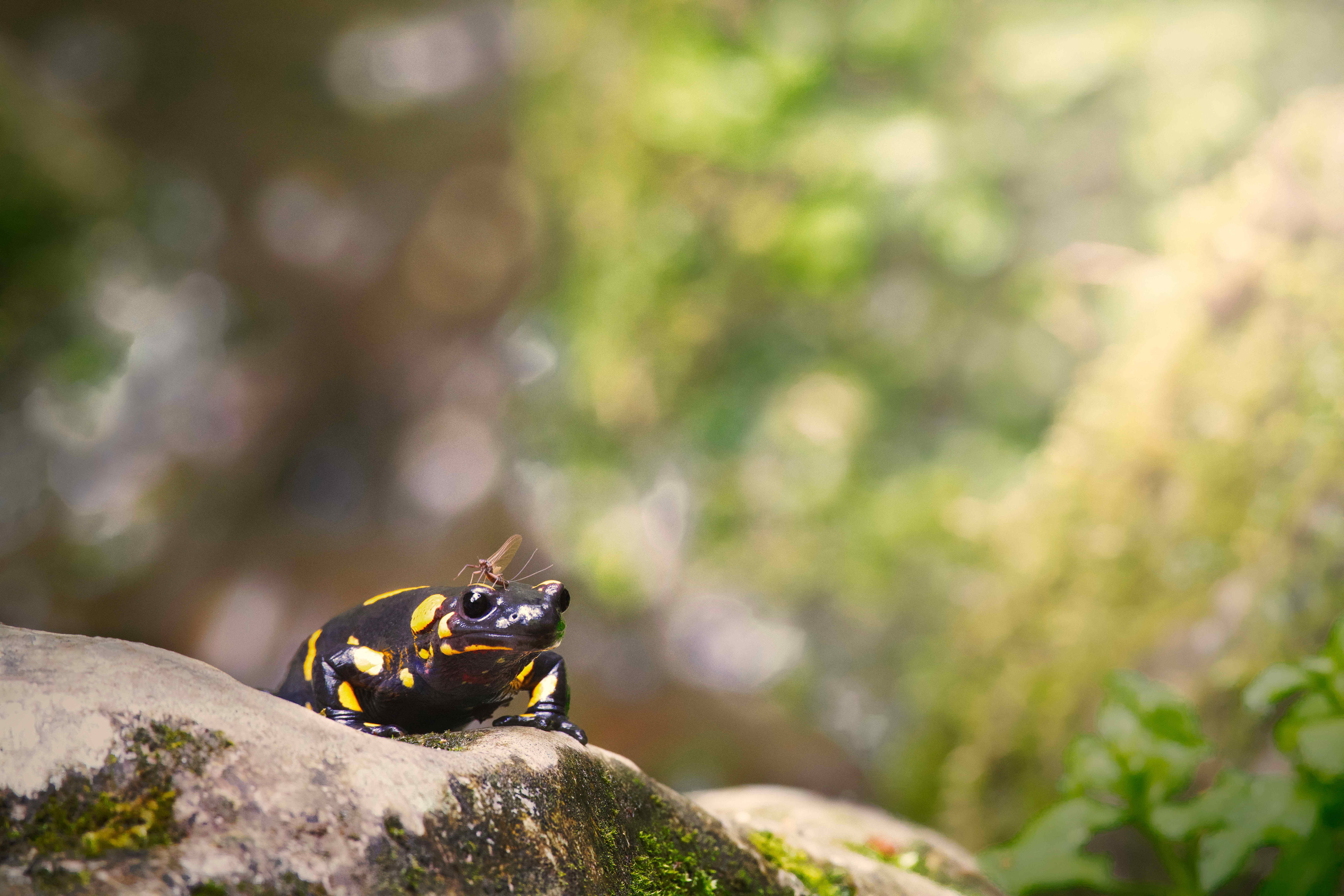Salamanders are amphibians that resemble their reptilian cousins the lizards. They belong to the animal kingdom, class Amphibia, and order Caudata. With their sleek bodies and unique ability to regenerate lost body parts, salamanders are captivating creatures.
Salamanders are characterized by their long bodies, short legs, and tails. They have moist skin, allowing them to breathe through their skin in addition to their lungs. Salamanders can come in various sizes, from just a few inches to over two feet in length, depending on the species.
Some species have bright and vibrant colors, while others have more muted tones for camouflage. Have fun exploring the colorful variations, general characteristics, different types, and what sets them apart from other amphibians.
One of the most remarkable features of salamanders is their ability to regenerate lost body parts. If a salamander loses a limb or part of its tail, it can regrow the missing body part over time. This extraordinary regenerative ability sets them apart from many other creatures and has fascinated scientists for years.
Types of Salamanders
The salamander exhibits impressive diversity, with over 700 known species distributed around the world. Let’s explore some of the most common and popular types of salamanders:
- Fire Salamander (Salamandra salamandra): The fire salamander is one of the most well-known species. It has distinct black skin with vibrant yellow or orange markings. Fire salamanders are typically found in European forests and have toxic skin secretions to deter predators.
- Chinese Giant Salamander (Andrias davidianus): As the world’s largest salamander, the Chinese giant salamander can grow up to six feet in length. Found in China’s mountainous regions, it has a broad head, small eyes, and a wrinkled body.
- Greater Siren (Siren lacertina): The greater siren is an aquatic salamander found in the southeastern United States. It has a long, eel-like body and lacks hind limbs. Its external gills allow it to breathe underwater.
- Red Salamander (Pseudotriton ruber): The red salamander is native to the eastern United States. It displays a striking combination of red or orange markings on a black body. It inhabits streams and moist woodland areas.
- Newt (family Salamandridae): Newts are a group of salamanders that go through a distinct aquatic larval stage before transforming into terrestrial adults. They are known for their bright colors, including orange, red, and yellow markings.
- Axolotl (Ambystoma mexicanum): The axolotl is a unique salamander that remains in its aquatic larval form throughout its life. Native to Mexico, it has a fringed appearance, external gills, and the remarkable ability to regenerate lost body parts.
There are over 700 known species of salamanders worldwide, showcasing their incredible diversity. The most common or popular salamanders can vary depending on geographical regions and personal preferences.
However, some widely recognized and appreciated salamanders include the fire salamander, Chinese giant salamander, greater siren, red salamander, newt, and the axolotl.
What makes salamanders unique?
Salamanders are known for their unique ability to regenerate lost body parts, such as limbs and tails. This regenerative power is unparalleled among vertebrates and has intrigued scientists for centuries.
The salamander also plays crucial roles in ecosystems as both predator and prey, contributing to the balance of populations and nutrient cycles. Their adaptations to various habitats, including aquatic and terrestrial environments, make them versatile and fascinating creatures.
Summary
Salamanders are captivating creatures with their sleek bodies, regenerative abilities, and diverse species. From the fiery colors of the fire salamander to the unique fringed appearance of the axolotl, salamanders showcase the wonders of the natural world.
By understanding their characteristics, different types, and ecological significance, we can develop a greater appreciation for these enigmatic amphibians and the ecosystems they inhabit.



































































